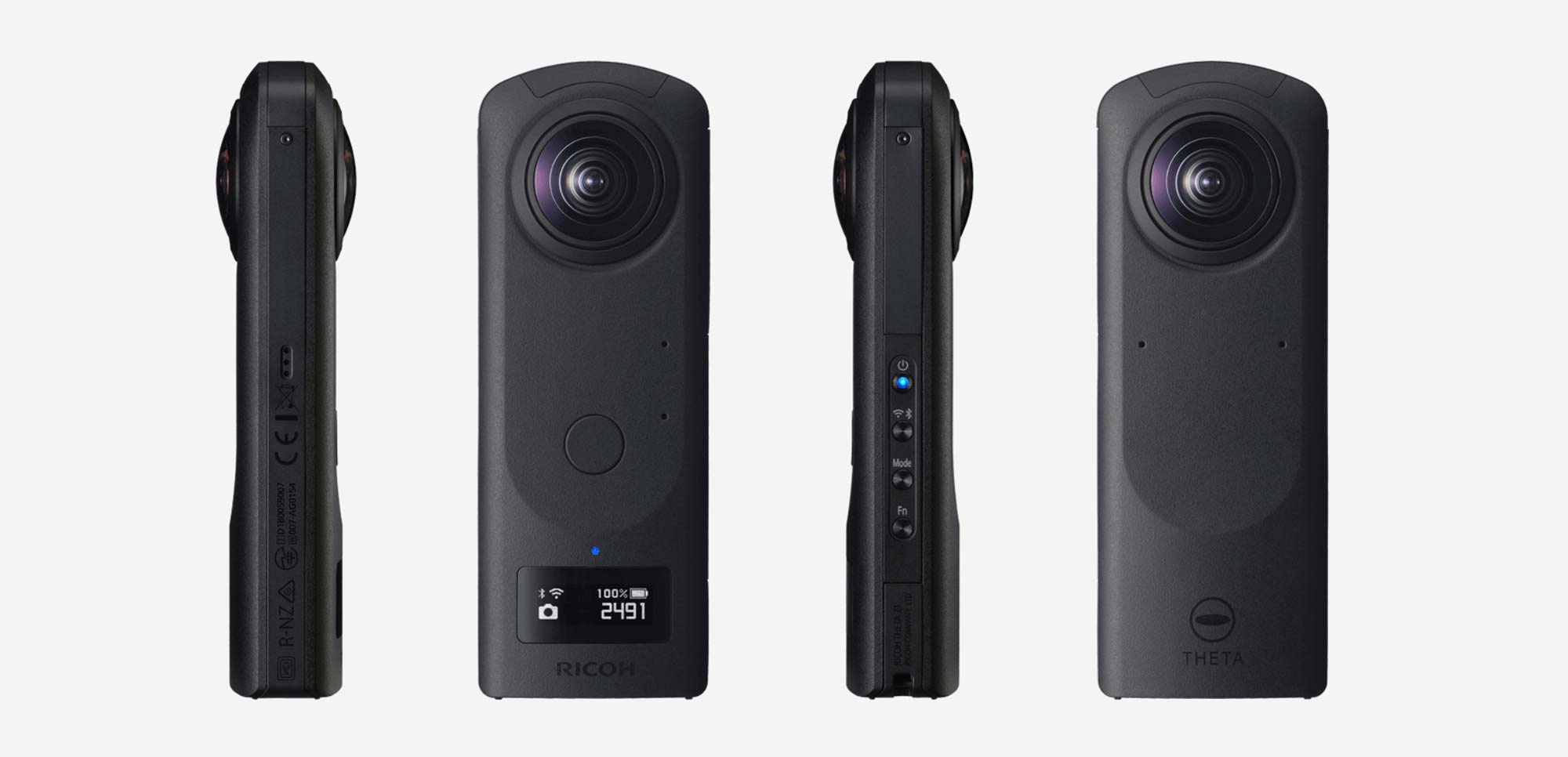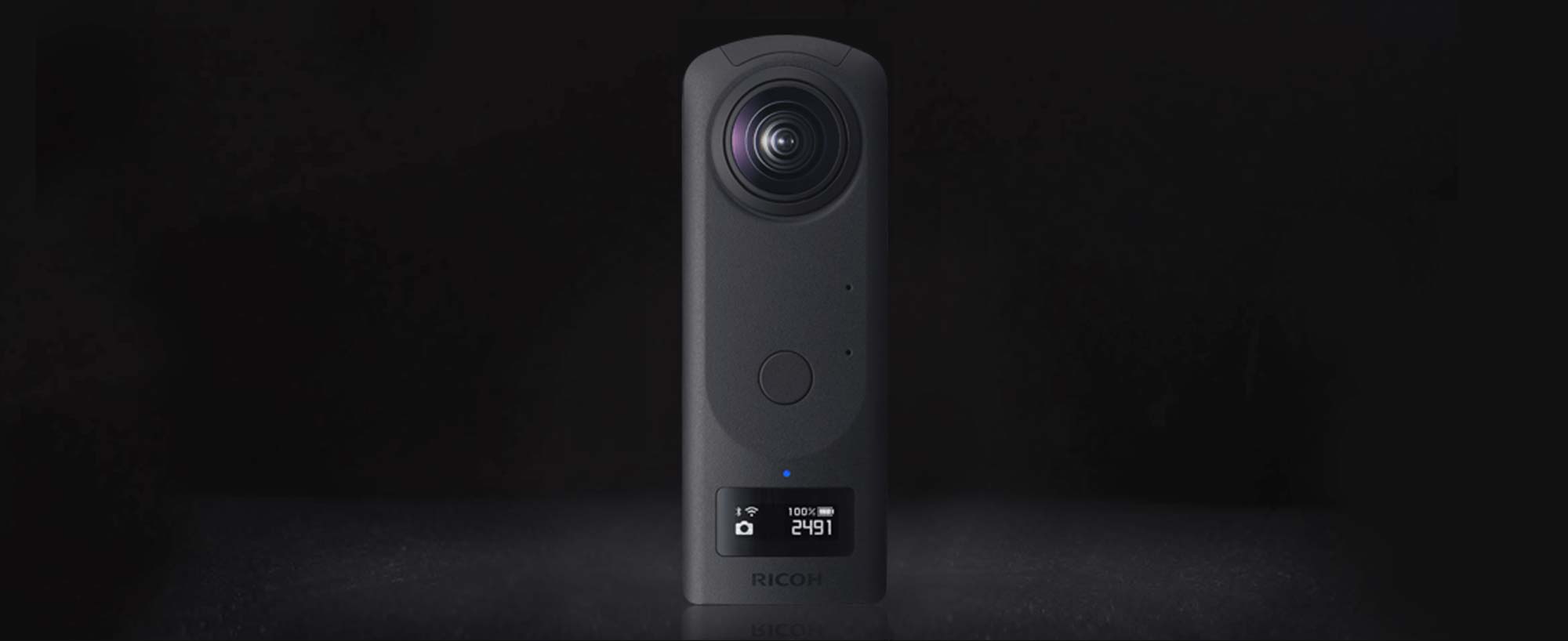Tom's Guide Verdict
The Ricoh Theta Z1 360-degree camera costs twice as much as the competition, but it could be worth the money in some situations.
Pros
- +
Good low-light images
- +
Sturdy, easy-to-use design
- +
Quality videos
- +
Third-party plug-ins increase functionality
Cons
- -
Expensive
- -
Storage not expandable
- -
Requires two apps to edit video
Why you can trust Tom's Guide
Virtual reality goggles for the masses may have stalled out, but there are still other uses for 360-degree cameras. Ricoh is out to prove not only that the category is still viable, but also that there's a market for higher-end models. The Ricoh Theta Z1 ($999) is more than twice as expensive as other 360 cameras, but it offers, among other things, larger image sensors for better low-light photography. While the Z1's attributes are enough to make it one of the best 360 cameras around, the cost premium will be a bit too much for most consumers.
What I liked
Design
The Ricoh Theta Z1 looks essentially like a larger version of the company's older 360 camera, as well as most other 360 cameras, such as our favorite, the Insta360 One X2. Ricoh's new camera is a large rectangle whose top edge is slightly rounded, and its two lenses sit on opposite sides of the top end.

On the lower third of one side is a shutter button and a small, black-and-white OLED display that shows information such as your shooting mode, battery life and the amount of storage remaining. Four buttons along one of the narrow sides control power, Wi-Fi and Bluetooth, shooting modes and the timer.
This design works for two reasons: You can use the camera without a selfie stick, and the device slides easily into your pocket. The square shape of GoPro's Max allows for neither of those benefits.
The Z1's magnesium body also feels solid, though the camera is not water-resistant, as is the case with the GoPro Max.
Image quality
The Theta Z1 uses two 1-inch, backside-illuminated CMOS sensors, so you can take much larger images, and at better quality, than with other 360 cameras. Still images can be as large as 23 MP (6720 x 3360 pixels), and videos are recorded at 4K (3840 x 1920) at 30 fps.
By comparison, the Insta360 One X takes stills at 18MP (6080 x 3040), and its max video resolution is 5.7K (5760 x 2880) at 30 fps. The GoPro Max takes 16.6-MP photos at 5.6K video.
However, as with any other camera, megapixels aren't everything. The larger size of the Z1's sensors mean it can capture better images, which was most evident in low-light situations.
In good lighting, the Z1 excels. I took a few photos inside the Amazon Spheres in Seattle and was impressed with the details in the images. The gray steel girders, brown wooden boards and green trees were nicely saturated and detailed. The Insta360 One X's photo wasn't nearly as rich or colorful, chromatic aberrations were more visible, and the lighting was drabber.
To really test the Z1's quality, I took it, along with the Insta360 One X and the GoPro Max, to Grand Central Terminal and took a few shots in the main hall of the station. While I wouldn't call its performance great, the Z1 did the best of the three at capturing the inside of the dimly lit station. It picked up the most details in the ceiling friezes, and I was able to make out the stars in the constellations in the ceiling mural most clearly. However, there was noticeable chromatic aberration (purple fringing) around the windows, and the photo was very grainy overall.
Ricoh Theta Z1
GoPro Max
Insta360 One X
The Insta360 One X was the worst of the three. It took a longer exposure than the other two, which resulted in a good deal of blurriness throughout the image.
Video and audio quality
I mounted all three cameras to a bike and took them for a ride through Central Park. The Z1 was very effective at eliminating wind noise and even picked up the sounds of the bike gears meshing. The GoPro Max's video was just as effective, while wind noise plagued the Insta360 OneX's video.
The Theta Z1 also did a decent job at stabilizing video, but it wasn't as effective as less expensive cameras. I attached the camera to the back of my dog and had him run across a field.
The Z1 was able to eliminate almost all the movement and keep the horizon fairly level. However, the footage still looked a bit wobbly. Similar videos shot with the GoPro Max and the Insta360 One X were much stabler.
Plug-ins
Because the Theta Z1's operating system is based on Android, third-party developers can create plug-ins that add features to the camera. There are currently 42 plug-ins, which include features such as wireless livestreaming and control of the camera using Alexa. You can even have the camera play a bird call right before it takes a picture. That way, you can get the attention of an animal so that it's looking right at the camera when the shutter snaps.
What I didn't like
Nonremovable storage
Unlike virtually every other camera I've tested, the Theta Z1 has nonremovable storage. The device has about 19GB of usable storage, but if you fill that up, you'll have to delete files on the camera to keep using it. To be sure, 19GB isn't small; the company says you'll be able to store roughly 40 minutes of 4K-quality video. In my experience, a 2-minute 4K clip took up 950MB.
Can't view files until you transfer them to smartphone
Unlike the GoPro and the Insta360 cameras, you need to first download images and videos from the Theta Z1 to your smartphone before you can view them. Not only does it take a lot of time to transfer, but it also takes up a lot of room on your phone. Considering that all three cameras connect to your phone via Wi-Fi, this seems like an unfortunate oversight on Ricoh's part.
Multiple apps
With the basic app for the Z1 (available for Android and iOS), you can view and upload files, but if you want to make any significant edits, you have to download a second app, called Theta+ (also available for Android and iOS). This lets you add filters, music, backgrounds, and even an inset video showing you an alternate view from the same video.
However, one feature the Z1 lacks, which is you can do in both GoPro's and Insta360's apps, is edit a video to automatically change the view as it's playing. For example, you can edit the video so that the view of the camera rotates 180 degrees from the start to the end of the video or shift to show something to your left or right.
Ricoh also has several apps for laptops, including its Basic app (Windows and Mac) which is only for photos, a File Transfer app (Mac), a Movie Converter app (Windows and Mac), and an Adobe Photoshop Lightroom Classic CC plugin. The Basic app and Movie Converter apps are just that, and don’t allow you to edit the photos or videos in any way.
Short battery life
The more-powerful processor in the Z1 goes through the camera's battery pretty quickly. Transferring a 900MB file to my smartphone via Wi-Fi drained the battery by about 12%. If you plan on copying lots of files, best to use Ricoh's desktop app (available for Macs and PCs) and plug the camera into your computer directly.
Bottom line
Does the Ricoh Theta Z1 take higher-quality images than other 360 cameras? Yes. Is it worth twice as much? That depends. If you need a 360 camera to take indoor images and video where lighting is less than ideal, the Z1's larger sensors definitely help. And although there aren't all that many plug-ins, I like that third-party developers can create plug-ins for the camera.
However, for the majority of consumers, the $400 Insta360 OneX or the $500 GoPro Max are better options. In good lighting conditions, they produce equally vibrant photos and video, and their apps are easier to use, offering more functions.

Michael A. Prospero is the U.S. Editor-in-Chief for Tom’s Guide. He oversees all evergreen content and oversees the Homes, Smart Home, and Fitness/Wearables categories for the site. In his spare time, he also tests out the latest drones, electric scooters, and smart home gadgets, such as video doorbells. Before his tenure at Tom's Guide, he was the Reviews Editor for Laptop Magazine, a reporter at Fast Company, the Times of Trenton, and, many eons back, an intern at George magazine. He received his undergraduate degree from Boston College, where he worked on the campus newspaper The Heights, and then attended the Columbia University school of Journalism. When he’s not testing out the latest running watch, electric scooter, or skiing or training for a marathon, he’s probably using the latest sous vide machine, smoker, or pizza oven, to the delight — or chagrin — of his family.

